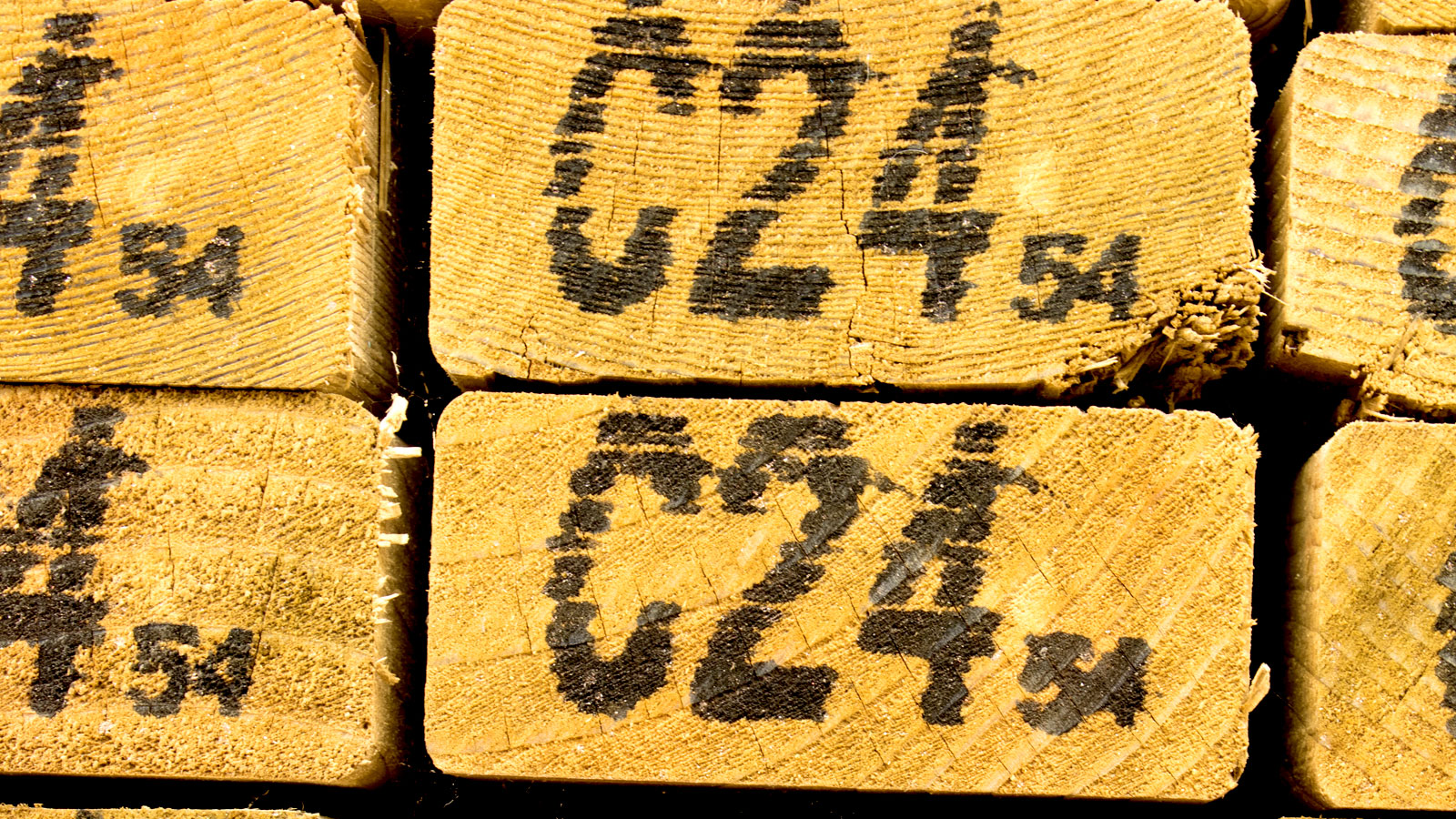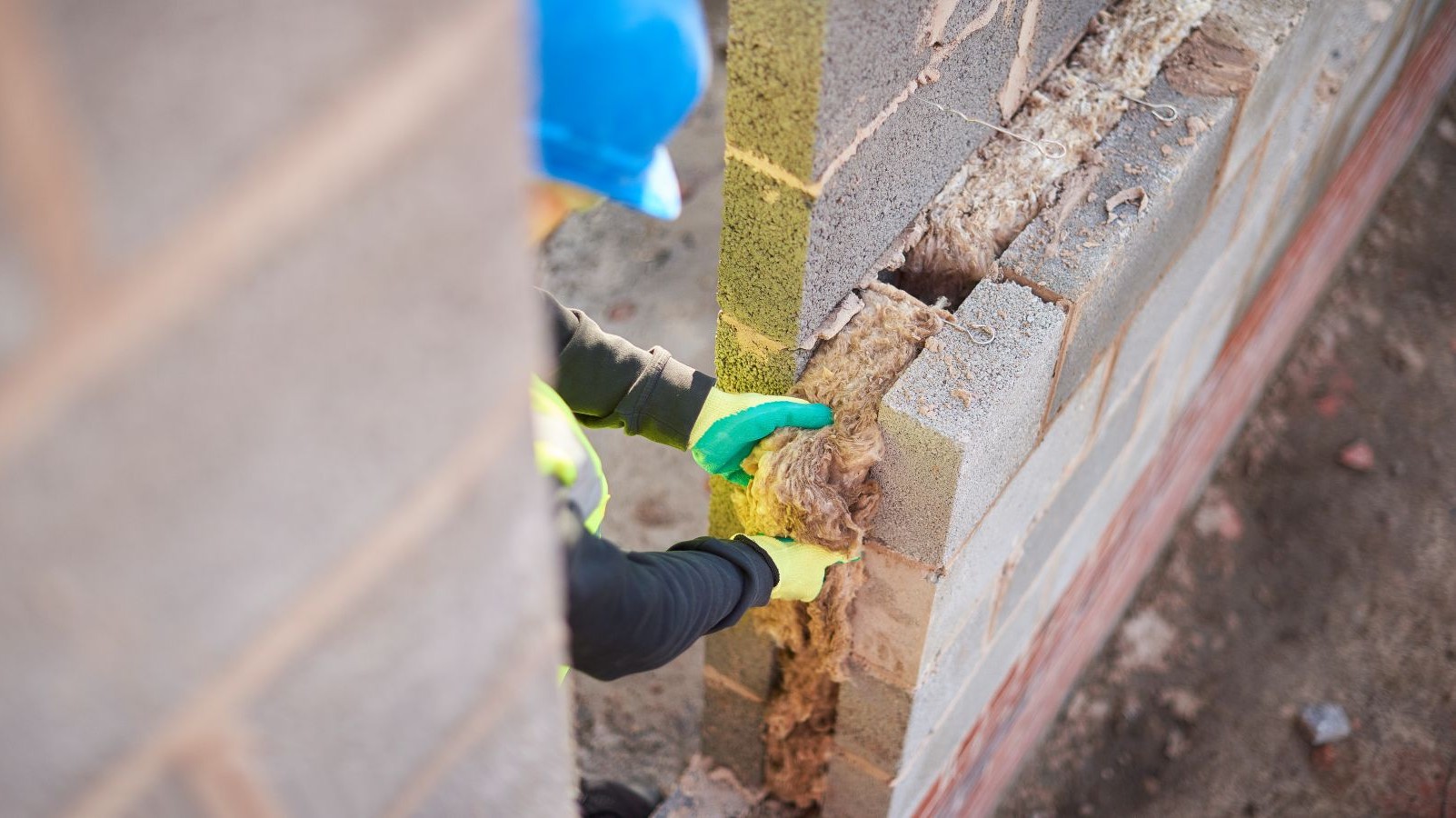C16 vs C24 timber: What are the differences and which will you need for your project
C16 vs C24 timber is a choice you’ll need to make when working on a DIY, self build or home renovation project. Here get expert advice on what to choose

When you need to invest in timber for your next project its decision time. C16 vs C24 timber is your typical choice. But which one will you need for your project? Can you use either? This will ultimately depend on what type of project you are working on.
Strength is one of the key differences between the two timber ratings and each works well in specific scenarios. Are you working on a timber frame extension or putting up an internal partition wall, for instance? It's important that you choose the right one for the job.
Here you’ll get expert insight into the differences between C16 and C24 and what type of projects you should be using them on.
C16 vs C24 timber: How is timber graded?
Timber is not created equal and it's for this very reason it is graded. This helps determine its usage on a project. “Whilst some timber was, and still is, visually graded by far the most common method of grading for strength today is a method called ‘machine grading’,” begins Jay Hubbard, part of English Brothers.
So what is machine grading? “Machine grading literally means using machines to grade; a very fast way to determine strength,” he adds.
But what does a machine grade? “They are designed to measure stiffness, density and elasticity of timber. There are different types of machines. For example, some use X-ray to measure knots and grain direction, some literally bend the timber to test for strength.”
But what are the factors that affect grading? “The main aspects that determine the overall strength grade are size and frequency of knots (large and frequent knots weaken the timber), splits (splits reduce strength), density (less density = weaker timber) and grain direction (straight grain is stronger than wavy grain),” Hubbard says.

Jay Hubbard has been part of his family’s business, English Brothers, for 20 years. A member of the Structural Timber Association, the company has been manufacturing bespoke timber frames since 1924, exclusively for the self builder. English Brothers celebrated the creation of its 1,000 th one-off timber frame kit earlier in 2024.
What are the key differences between C16 and C24 timber?
“Both are strength grades, and C24 is stronger than C16 timber,” reveals Hubbard. “C24 timber is stronger, with a minimum bending strength of 24 N/mm² compared to C16's 16 N/mm². It is generally denser and of higher quality and can be used in applications requiring higher load-bearing capacity and greater durability."
Bring your dream home to life with expert advice, how to guides and design inspiration. Sign up for our newsletter and get two free tickets to a Homebuilding & Renovating Show near you.
He adds: “Visually, most people won't notice any difference between C16 and C24 unless they look very closely." Why? “The colour will be the same, within natural tolerances at least, and the finish will be the same (smooth, often with slightly rounded edges).”
But, there are subtle differences as Hubbard shares: “C16 may have slightly more knots and some slight splits, whereas C24 may appear more ‘perfect’.” But the most obvious and easiest to spot is the timbers marking: “The biggest giveaway, of course, is that they will be stamped with either C16 or C24.”
What are the pros and cons for C16?
Hubbard sets out below the plus and minus points for C16.
+ Cheaper Due to it having a lesser strength requirement, C16 more easily passes the grading ‘tests’, so is more prevalent — which makes it cheaper than C24. It is also acceptable for most uses, unlike non-strength graded timber (such as 47mm x 100mm).
- Limited use There are limits to its use due to it being lesser strength than C24 — for stud walls it’ll usually be fine, but unlikely to be suitable for joists or rafters.
What are the pros and cons for C24?
What are the plus and minus points for C24? Hubbard explains.
+ Strength It’s stronger, so it can be used in more demanding applications such as floor joists and rafters. Due to its strength, it’ll be able to span longer distances too (hence its use for floors and roofs).
- More expensive For the opposite reason that C16 is relatively cheap, C24 is relatively expensive — less timber passes the grading test, so it’s a little less prevalent. Sometimes, although quite rare, this can lead to shortages making it difficult to get hold of.
What type of jobs and projects use C16?
C16 timber is far more common on DIY projects than C24 timber. Here Hubbard explains why and where it is commonly used. “As it has less strength than C24, vertical applications are best for this material — it is rarely considered strong enough for joists or roofing, other than over short spans.”
So where is C16 commonly used? “C16 is typically used for framing walls as studs, whether load bearing (structural) or not,“ reveals Hubbard. “Often, load bearing stud walls will require additional strengthening such as sheets of OSB or plywood. Its low cost and dimensional accuracy mean it is also often used for non-structural tasks such as boxing in pipework and noggins to carry heavy items such as kitchen units, TVs etc.”
What type of jobs and projects use C24?
While C16 is a popular choice for most DIY projects, C24 is less commonly used, being a more likely choice for self builds and home extensions as Hubbard shares: “Whilst C24 can be used for wall studs, it is an expensive option and rarely used unless specifically requested by the building designer or structural engineer.
However, it comes into its own when used horizontally or diagonally: its strength makes it the ideal choice for floor joists and roof rafters. It can also be used, if properly treated, for decking joists.”
C16 and C24 timber is useful for DIY projects, self builds and home extensions. Check out our internal walls: Stud or solid and 17 brilliant rear extension ideas guides where C16 and C24 might be called into action.
Steve Jenkins is a freelance content creator with over two decades of experience working in digital and print and was previously the DIY content editor for Homebuilding & Renovating.
He is a keen DIYer with over 20 years of experience in transforming and renovating the many homes he has lived in. He specialises in painting and decorating, but has a wide range of skills gleaned from working in the building trade for around 10 years and spending time at night school learning how to plaster and plumb.
He has fitted kitchens, tiled bathrooms and kitchens, laid many floors, built partition walls, plastered walls, plumbed in bathrooms, worked on loft conversions and much more. And when he's not sure how to tackle a DIY project he has a wide network of friends – including plumbers, gas engineers, tilers, carpenters, painters and decorators, electricians and builders – in the trade to call upon.

